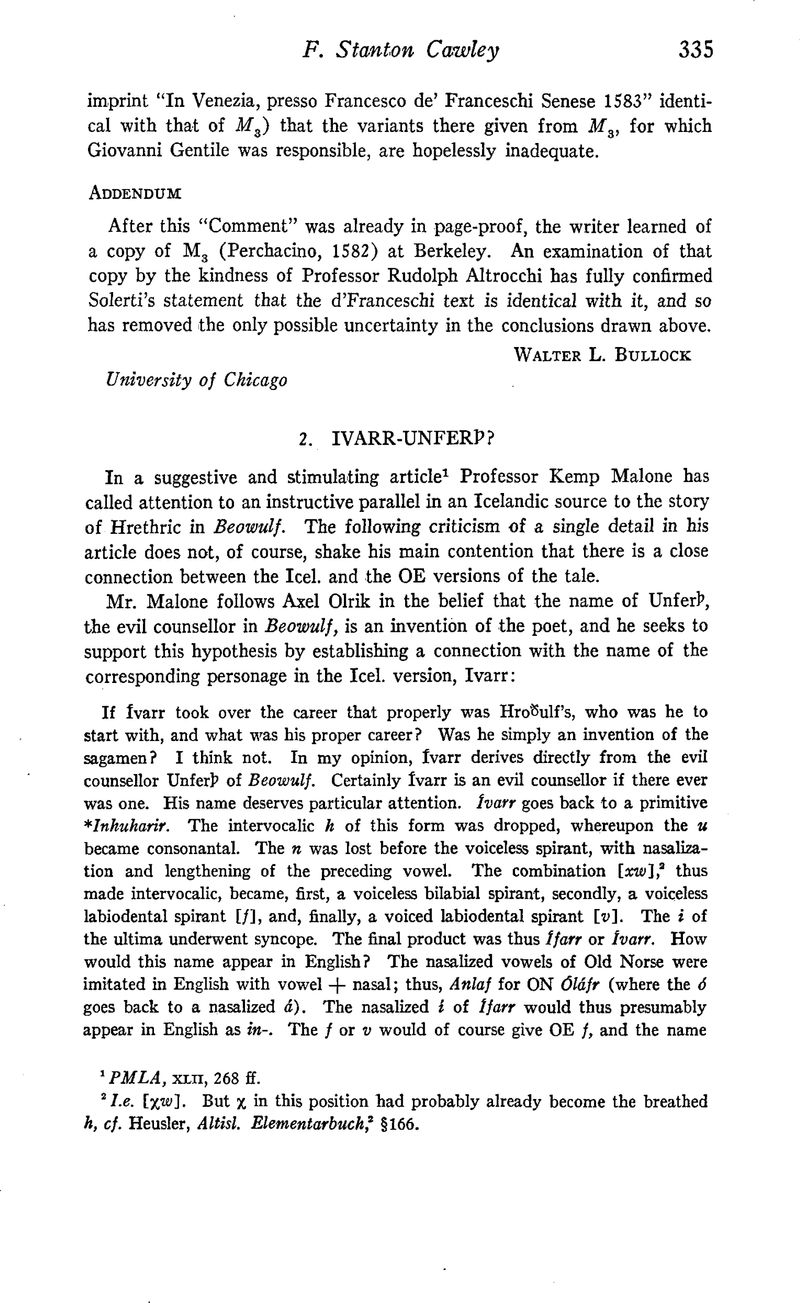No CrossRef data available.
Published online by Cambridge University Press: 02 December 2020

1 PMLA, xlii, 268 ff.
2 I.e. [χw]. But χ in this position had probably already become the breathed h, cf. Heusler, Altisl. Elementarbuch 2 §166.
3 Malone, op. cit., p. 302 f.
4 See Noreen, Altisl. Gram. 4, § 230, 1; Heusler, op. cit., § 167, 2.
5 Cf. Heusler, ibid., §139, Anm. 1.
6 Cf. Noreen, op. cit., §83.
7 See Erik Björkman, Nordische Personennamen in England, p. 72, under Ingware, Hinguar. The nom. Inwœr occurs in a royal grant to York Cathedral of ca. 930, the gen. lnwœres in the oldest text of the Anglo-Saxon Chronicle, annal 878 (variants Inweres, Ingwœres, Iweres). The form Iweres in two late texts (DE, eleventh and twelfth centuries) probably represents a substitution according with the contemporary pronunciation of the Norse name, with loss of nasalization. For a full discussion of the whole Sippe and the etymological relationships of its various members see Noreen's article Yngve, Inge, Inglinge m. m., Namn och Bygd, viii, 1 ff.